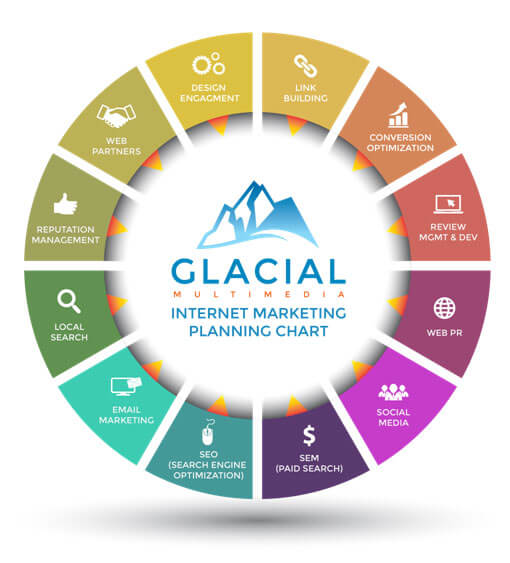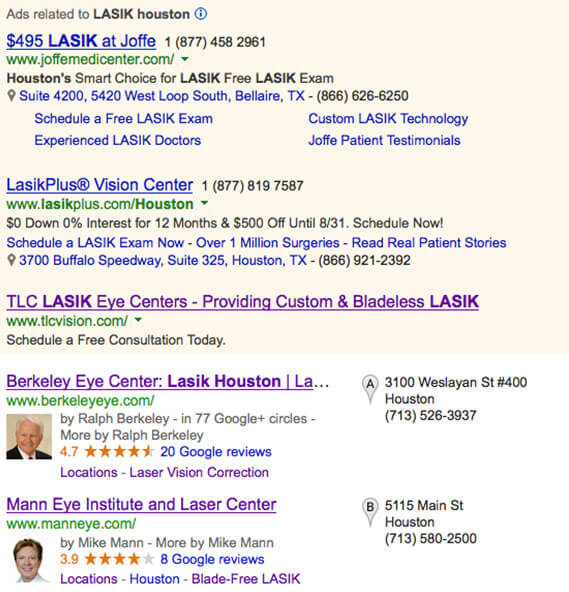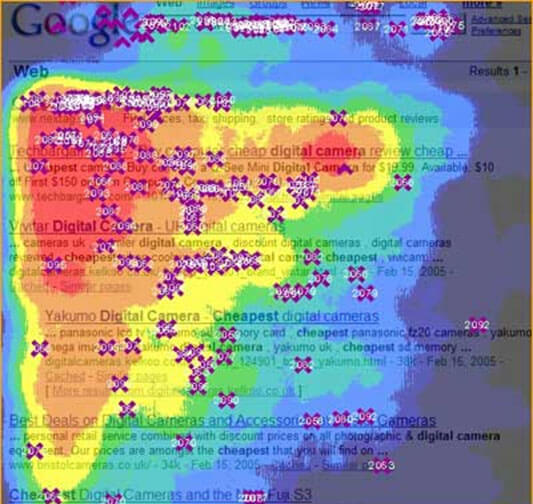Posted on January 8, 2015
Inbound Marketing for Ophthalmology Makes Sense…
Many ophthalmology practices and other physicians have a general distaste for marketing and some of the cheesy things that can often go along with it. So to say that your practice should be marketing might seem awkward. Take a moment to read this article and understand why an inbound marketing strategy can be tasteful and effective at the same time. Regardless of your thoughts on marketing, the ethics of it and its overall appropriateness, the fact remains that if you want to build your practice you should be investing in some level of marketing.
What is inbound marketing?
I first heard of inbound marketing through a book published by HubSpot about 5 years ago. I thought the whole concept made sense because it was what I had been doing for years. I was terrible at cold calling and simply felt awkward doing it so I set out on a different path. With the convergence of the internet, communications were made easier and I soon realized I could connect with a whole community of people who were interested in learning more about promotion via the internet.
Inbound marketing is a way to promote your company or practice through a series of digital media in a very educational way. Examples of inbound marketing include blogging, video distribution, YouTube channels, white paper reports, e-newsletters, social media marketing and more. This type of published marketing differs from traditional marketing and cold calling because it is designed to bring customers in to ask questions instead of interrupting and broadcasting. Inbound marketing techniques are used to reach customers at varying levels in their decision making process and helps to educate and assist them with their best purchasing decisions. Today’s buyers do a lot more research, read more reviews and listen more intently to what their friends have to say. This change in buying behavior requires practices to re-think how they handle their reputation management, online reviews and overall practice image. You can no longer market simply by signing up for TOP DOCs or Castle Connolly. What patients have to say matters more now than it did even prior to the internet. The customer now has more control than ever over your brand and reputation.
Getting on track with inbound marketing basics
1. Make a great website and optimize this for keywords that get traffic in your market!
2. Get a BLOG installed on your website and design a content development and marketing strategy.
3. Create a strong social media presence and utilize all of these tools for the distribution of your content.
4. Make sure that you are thinking about conversion optimization elements in order turn visitors into leads.
5. Tracking your leads in a CRM system and being able to nurture your leads is vital to success. Great marketing and lead generation are only as good as your ability to convert.
Take a look at the circle of Inbound Marketing concepts below when thinking about creating a task plan. It may seem difficult to hit all major aspects at one time so tackle the most important elements first.

Why is search engine positioning vital to inbound marketing?
“Search engine optimization and Internet marketing mix continues to drive LASIK leads.”
Why are the top LASIK surgery practices aggressive about top SEO positions and website traffic generation?
1. SEO is a dominant generator of website traffic and subsequent leads. LASIK websites that get more traffic do more LASIK surgery. Over the course of benchmarking 150 LASIK eye surgery practices with Google analytics the top practices for LASIK surgery volume are the same top traffic generators. A subsequent study by Rob D. Young at Search Engine Watch indicates that top SEO positions will get clicks over 18% of the time. This is a pretty good CTR (click-through rate) in my mind, especially compared with paid search marketing. This study also goes on to confirm that second and third positions are especially getting more attention these days. The conclusion is simple: Get to the first page and as close to the top as possible.
2. Top LASIK chains spend thousands upon thousands of dollars to maintain these top spots. Veteran LASIK marketers from LasikPlus and Joffe Medical spend large amounts on paid search and organic SEO to be at the top of the pack. Do you think they would spend thousands of dollars on search positions per month if they were not receiving good returns? If you hire the right SEO company they can exploit the weaknesses of large LASIK chains and help you to grab those top spots. See the search graphic for LASIK Houston. The top paid positions reveal the top chains are after this position at a very high click cost of over $16 per click.

3. Organic SEO represents a natural and often un-obtrusive way of gaining those top spots with the lowest bounce rate of all internet marketing. Compare paid search and social media traffic and you will see with absolute certainty that organic SEO visits are for more intentional and the result is drastically lower bounce rates. The leads from organic SEO are among the best quality leads because they have more relevancy than other methods of internet marketing. After a study of 150 ophthalmology practices it was concluded that bounce rates from SEO traffic are significantly lower than traffic from paid search or social media creating a better, more qualified prospect. Our survey revealed the following bounce rate averages:
Data from 2013 Glacial Multimedia Google Analytics traffic study of 150 practices:
Bounce rates from incoming traffic by internet media type:
- SEO — 27%
- Paid Search — 55%
- Social Media — 81%
As you can see SEO leads are far less likely to bounce. The main reason is because they conducted a very INTENTIONAL search.
4. Nielsen has made some usability studies to show the focus areas on a web page. Using this study you can gain a lot of insight — both for your SEO and for your paid search marketing efforts. Take a moment to review the information below and understand the top spots that attract clicks. A sample of over 8 million clicks shows that over 94% of users clicked on the first page result and less than 6% were actually clicking to the second page and selecting the result displayed there.
Neilsen, is a leading global information and measurement company, providing market research insights & data about what people watch & what people buy.

A few observations…
A. It is important to be above the fold. Website visitors read from top to bottom and from left to right. Not only does your practice need to be on the first page, but you also have to be above the fold to be notice in the Google search results.
B. This head map shows that most people are looking for the natural search results and not the paid ads. But on the other hand — we know that people click on Google Adwords. This is a complimentary marketing scenario.
C. Most people stop at the first page of a search result while only some go on to the second page, but after the second page it really doesn’t matter. The same pattern happens on the second page of results — you have to be above the fold to get noticed.
Conclusions
Inbound marketing concepts can be highly effective for your practice. You will need to be organized and approach the various aspects accordingly. This article has focused on the search engine optimization points associated with inbound marketing, but stay tuned as we will be addressing many other important aspects associated with inbound marketing. The topics of nurturing leads, social media optimization, social media tools, blog development and conversion optimization will appear in upcoming articles surrounding the topic of inbound marketing.
